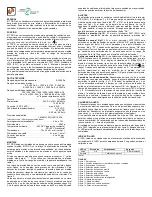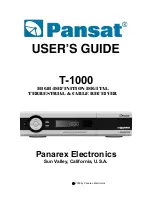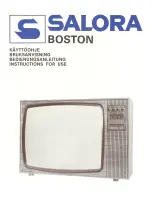
–
–
1
Description
The TT Series transceiver is designed for
reliable bi-directional, long-range remote
control and sensor applications. It consists of
a highly optimized Frequency Hopping Spread
Spectrum (FHSS) RF transceiver and integrated
remote control transcoder. The FHSS system
allows higher power and, therefore, longer
range than narrowband radios. The transceiver
has obtained modular approval for the United States and Canada.
Eight status lines can be set up in any combination of inputs and outputs
for the transfer of button or contact states. A selectable acknowledgement
indicates that the transmission was successfully received. Operating in the
902 to 928MHz frequency band, the module achieves a typical sensitivity
of –112dBm. The module is capable of gene12.5dBm transmitter
output power and achieves a range of over 2 miles (3.2 kilometers) line of
site in typical environments with 0dB gain antennas.
Primary settings are hardware-selectable, which eliminates the need for an
external microcontroller or other digital interface. For advanced features,
optional software configuration is provided by a UART interface; however,
no programming is required for basic operation. Housed in a compact
reflow-compatible SMD package, the transceiver requires no external RF
components except an antenna.
Features
•
FCC and Canada pre-certified
•
2 mile (3.2km) line of sight range
•
Highly efficient power use
•
Programmable receiver duty cycle
•
No programming/tuning required
•
8 status lines, 2 byte data input
•
Bi-directional remote control
•
Selectable acknowledgements
•
2
32
possible addresses
•
Serial interface for optional
software operation
TT Series Remote Control
and Sensor Transceiver
Data Guide
Figure 1: Package Dimensions
Revised 2/9/2018
0.131"
(3.33)
0.630"
(16.00)
1.150"
(29.21)
1
1
Model: TRM-900-TT
Model: TRM-900-TT
Lot FX9nnT
Lot FX9nnT
FCC ID: OJMTRM900TTA
FCC ID: OJMTRM900TTA
IC: 5840A-TRM900TTA
IC: 5840A-TRM900TTA
Additional Testing Requirements




































